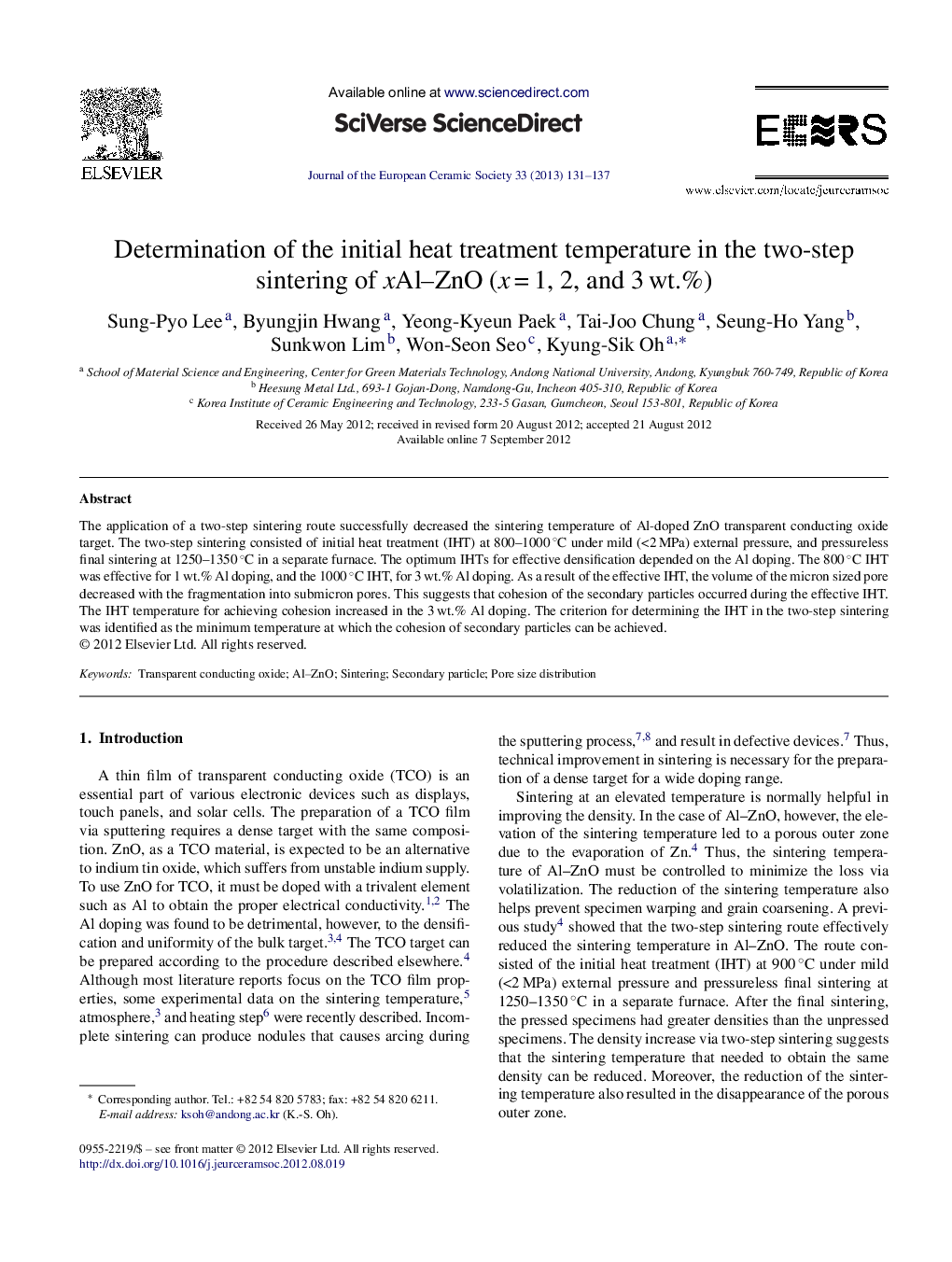| Article ID | Journal | Published Year | Pages | File Type |
|---|---|---|---|---|
| 1475954 | Journal of the European Ceramic Society | 2013 | 7 Pages |
The application of a two-step sintering route successfully decreased the sintering temperature of Al-doped ZnO transparent conducting oxide target. The two-step sintering consisted of initial heat treatment (IHT) at 800–1000 °C under mild (<2 MPa) external pressure, and pressureless final sintering at 1250–1350 °C in a separate furnace. The optimum IHTs for effective densification depended on the Al doping. The 800 °C IHT was effective for 1 wt.% Al doping, and the 1000 °C IHT, for 3 wt.% Al doping. As a result of the effective IHT, the volume of the micron sized pore decreased with the fragmentation into submicron pores. This suggests that cohesion of the secondary particles occurred during the effective IHT. The IHT temperature for achieving cohesion increased in the 3 wt.% Al doping. The criterion for determining the IHT in the two-step sintering was identified as the minimum temperature at which the cohesion of secondary particles can be achieved.
